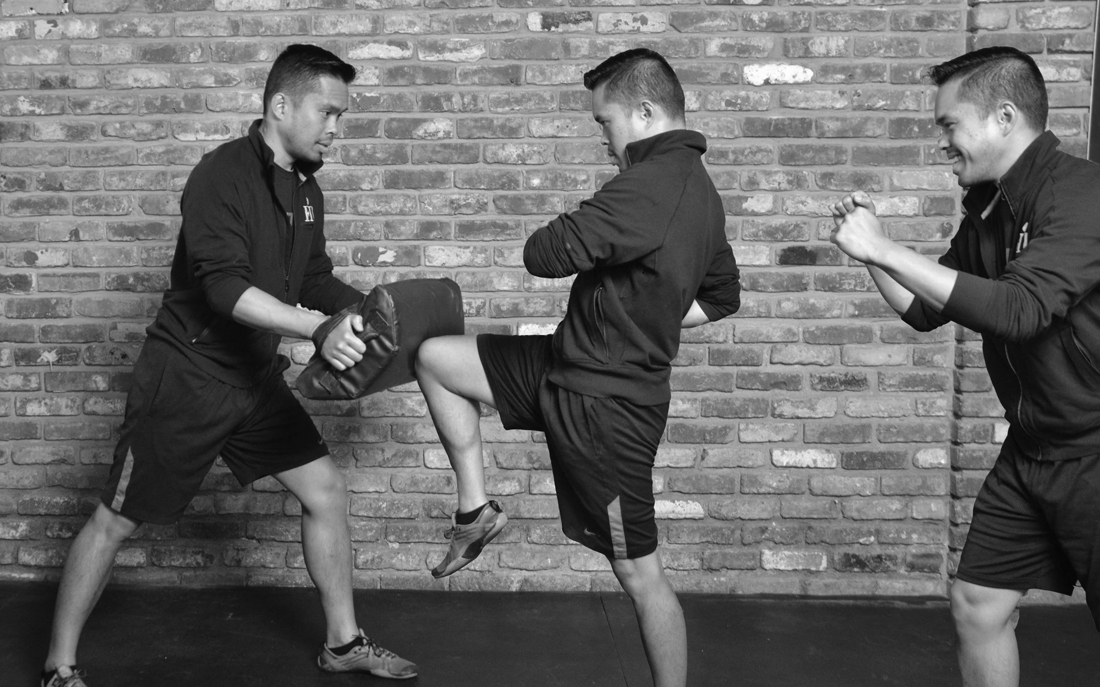The Art and Science of Training for Health
(or: The Art and Science of Living a Healthy Life: how to eat, sleep, train and relax for health and longevity)
by Mike Nichols, M.D.
Introduction
Training for speed, strength or size has been written about, often very well, for a over a hundred years.
No sound overview of training and eating specifically aimed at improving health exists.
There is a vast difference between training for ‘bigger, faster, stronger’ and training for health.
Most of the advice given for patients who want to be healthier is generic to the point of useless and in some cases is vague enough to be actually harmful.
Some very general principles need to be introduced and from these very specific recommendations will be given that make sense not only of the science of exercise and diet but the art of exercise as well.
When I say ‘the art of exercise’ I mean the actual esthetics. The body is so complex that it is literally beyond analytical description; this is a demonstrable mathematical fact. In such a case ideas of grace and beauty become the most direct way to describe in a synthetic understandable way important physical training concepts. There is an underlying demonstrable science that explains why physical activity well done ‘just looks right’ or is ‘so beautiful.’ Once I have laid out the connection in some physical detail between the analytical science and the actions that appear to be beautiful you will see that my appeals to beauty, grace, and elegance are very powerful shorthand for a great many important scientific facts that affect health and thus define the type and intensity of training. As far as diet and exercise go, briefly put: grace is tightly linked to effect.
Which brings up a note about science. Anyone who has read books which treat science issues has noted how selectively studies are quoted or used to further the author’s agenda. Even when honestly trying to present data in an objective way the selective vision of bias, often called attention blindness, gets in the way.
In this case the application of every principle I will here describe has been associated with measurable improvement in markers as diverse as bone mineral density, testosterone, insulin sensitivity, and inflammation.
In other words I will not be citing and quoting specific studies from different disciplines and telling you that put together in this unique way the science supports better health outcomes. No, in the case of this book, the principles are the generalized interpretation of a vast array of studies put together to form a coherent training, eating and living pattern with known, that is measured and verified, health benefits. Measured in over two hundred patients the bone mineral density, the testosterone, the exercise capacity, the inflammation, on and on, got better and meaningfully so. There is no other coherent pattern of life behavior that has been studied, put into practice and proven to improve every measure of health. Come let us reason together.
Chapter One
The Beginning
Eleven days before the World Trade Center towers were destroyed I left my medical practice of many years. In the turmoil of that time I sat in an office loaned to me by a friend and began the process of realizing my dream of many years: I would build a medical practice devoted solely to the treatment of disease by lifestyle intervention. Come what may, diabetes, coronary artery disease, cancer, osteoporosis, we would treat problems through calibrated , precise changes in patient’s diet, exercise, and relaxation behavior.
I was not a doctrinaire vegetarian, running guru, Hindu philosopher or charismatic supplement salesman. I believed then, I believe more strongly now, in the biological diversity of people enough to know that the path to health was unique for everyone. The only way to both respect that and to honor that in practice was to measure, to calibrate, to discover and define what was unique about each patient and to then, in a coherent, linear fashion, change behavior step-by-measured-step and to measure the result and to make course corrections as the data, the blood work, the bone density, the coronary calcium dictated.
Oddly enough this methodology goes by the strange name of ‘science.’ Bizarrely enough I proposed to see each patient as a precious experimental subject and that only they could be an adequate control for the experiment of their return to health. Who ever heard of using science to practice medicine?
Now I’ve gotten a little ahead of myself; those last sentences actually mean something and that something needs to be well understood.
The medical and scientific literature is full, is rich, is awash in the importance of various measurable blood and other physical markers and their association with disease, longevity, with vigor, with suffering, with, after all, the human condition. Yet, these markers are not part of the practice of medicine. Their use is limited to large-scale epidemiologic assessments. A simple example: there is no question that knowing your coronary calcium score- we will get to this later- tells you much more about your annual risk for a heart attack than knowing your total cholesterol. However the test is more expensive than cholesterol testing so, in the jargon of medical research, the cost per life saved is prohibitive so measuring it is not routinely recommended. Still…if the life saved were your own or your son or daughter…it would be a bargain. The recommendation against measuring coronary calcium is not cynical as it is based on the knowledge that even if most people knew they were at increased risk of heart attack because of their score that knowledge itself does not fix the problem. And that is fair. Insurance or government should not pay for everyone to be tested for all known risks because the cumulative cost would be overwhelming and a poor use of resources because…’insurance companies are evil’…’we do not have universal health care due to the social injustices spawned by capitalism’…’doctors don’t really care about their patients.’ No, none of the above; because most people won’t get better even if they know with certainty that they should. All of us have grown distrustful of all of the purported changes we should make: eat low fat, eat high fat, run, no lift weights, lose weight but fat people live longer, meditate, pray, whatever. Wave after wave of fashion, of diets, of advice changed the next day or week or decade. Skepticism combined with inertia, denial, and the rigors of life leave most people unresponsive to more precise information about their health because they won’t do anything about it anyway.
Yet some of you will or would if you knew precisely what to do and how to do it. There is a way to know these things. Your body would love to tell you; you only have to know it’s language. It speaks in mg/dl, in VO2 max, in foot speed. It speaks in a precise knowable language about exactly how to improve your life, health and well-being. It does not respond well to vagaries like “eat right and exercise” because we are all unique and require a very personal recipe or roadmap for each element of the behavior that will restore us, will heal us, will prolong and enrich our lives.
You will find in the conventional practice of medicine that no problem is realized, or admitted, unless and until there is a simple remedy. In that last sentence read ‘pill’ for ‘simple.’ I do not believe the conspiracy theorists that traditional medical practice is in thrall to, the conspiracy theorists term, “Big Pharma.” Rather I believe the conspiracy is actually a collusion of interests and reality; Doctors want to fix problems and drug companies wants to sell and profit from solutions. Sure there are bad men doing dastardly things and colluding to sell by the proverbial ‘hook or crook’ all of the drugs they can manufacture. But this does not drive the desire of patients, physicians and institutional medicine to have a simple, elegant disease/drug/cure model of behavior.
The perfect example: get pneumonia and take an antibiotic and get well; get well rather than die as did our Grandparents generation. Wow! How cool is that? The problem is not all problems are as simple as ‘death or a pill.’ While things are not that simple our thinking is; our thinking is hypnotized by the prospect of such a simple equation for everything, for every proposition, that looks like “death or a …fill in the blank.” “Pill” looks more interesting than change your diet, your work habits, your type and intensity of exercise, your tendency to rest, prayer, meditation and drinking binges.
The fly in the ointment, the error in logic, is that most forms of death and disease are not as simple as a single agent cause, like a bacteria, and an inadequate treatment like an antibiotic. To be entirely fair even in the case of pneumonia it is not as simple as that or there would not be such a high percentage of those who recover from even the severe pneumococcal pneumonias (some of the killer kinds). Still the point remains that this paradigm of disease/drug/cure is a very compelling sell; to both the doctor, the patient, insurance companies and the government.
If you are one of those who already see the fallacy of ‘cut, burn and poison’- the pet name for mainline medicine of chiropractors and other alternative medicine advocates- then you are ready for the information I will present in this book. But full disclosure: I am the occasional advocate of that very model of ‘cut/burn/poison.’ Sometimes that is as good as it gets; but not always and not often if you look at the broad overview of most people, most of the time, with most health problems. Those people and their problems need a much better treatment; they need a better life!
Chapter Two
Housekeeping
I previously mentioned that there was a large collection of measurable variables that when improved lead to a longer healthier life. Most people have not heard of these variables or have read about them only in glossy adds designed to encourage the purchase of supplements, vitamins, miracle foods, or weird electromagnetic devices. More magical thinking, more ‘death or a pill’ thinking tricked out in self referential gloating about not being hornswoggled by ‘Big Pharma.”
Basic medical science is genuinely interested in discovering the causes and cure of disease, suffering, aging and even death. Thousands of people, pure of intent, of keen intellect and purpose work long hours in labs, in offices, late in institutions to unlock the processes of disease and the mechanisms of possible cure. If you don’t believe this what I will say won’t make much sense; won’t motivate you to take seriously the work of these scientists, these benefactors of mankind.
Why do I take you back to whether or not you have a basic belief in scientists and the scientific method? Because as a practicing physician for many, many years I’ve grown accustomed to the fog of beliefs, doubts, skepticism and confusion most people work with in their perception of medical science and physician’s recommendations. I well understand the problem but need your essential conviction that real science well done can and does discover things that matter. This is not as silly as it first seems. If you believe, most doctors do for example, that your cholesterol number, whatever that might be is one of the most important things in the world and that behaving in such a way as to drive this number down is all that matters, trumps everything, is the be all and end all of heart disease, risk for stroke and the like then I cannot be of help. For reasons big and small, all of the basic medical literature has always been clear about this, cholesterol is just one number among many and those then are nested together to evaluate your relative risk of vascular disease. If this notion of multivariate relatedness is too much to swallow then what I will say will sound like little more than questioning conventional wisdom- the Holy Grail is Lower Cholesterol- when what I will be trying to do is put this one number in the context of many others that matter as much or more but for which there is no pill to fix or change them and that for this reason you will not have heard as much about these other numbers. The wonderful thing is you have an enormous amount of control over these other important variables; actually much more control than over your total cholesterol number.
With this background in mind I need to make a few other conceptual points before I get to the actual things you can fix and why.
Let me introduce you to three ideas:
First is the idea to be skeptical about what matters. For example: something might change a number related to disease but not affect or, in some cases, might adversely affect a more important endpoint like death; lowers blood pressure but happens to increase your chance of death or lowers your blood glucose/sugar but not the diseases or death associated with diabetes. Over the years many drugs have been withdrawn after discovering just such problems. An everyday example: most of the common anti-inflammatory and pain medicines like Advil have been around for decades and work very well for the endpoint of pain; the endpoint of death happens to be increased in those who take these medications for they are associated with an as much as 40% increased chance of heart attack in regular users. Be careful how you choose your desired endpoint. Another example: high homocysteine is associated with stroke, heart disease and premature mental decline, take an array of vitamin B’s and your homocysteine goes down but not the homocysteine related risk for stroke, heart disease and premature mental decline. Oh and there is a known risk of colorectal cancer and prostate cancer if you take the B vitamins.
Second is to note or watch for abuse or misuse of statistics: you will often hear that use of Lipitor and related drugs ‘reduces heart disease by 30%.’ What this actually means is that 1,000 people need to take the drug to prevent heart related problems in about 3 people. If 1,000 people do not take the drug and 11-12 of them have heart related problems and 1,000 people take the drug and only 8 or 9 people have heart related trouble then that ‘reduces heart disease by 30%. The perception and the facts don’t add up. A reasonable person thinks that “30% reduction” means if 10 people take the drug then it will save 3 people’s lives. What it actually means is that 1,000 people risk the side effects and as of yet unknown long term effects of a drug so that 3 people might not have a problem. Fine, let’s help those 3; eating peanuts three times per week has been shown to have about the same statistical impact as Lipitor yet no one, rightly, has claimed that ‘eating peanuts three times per week reduces heart disease by 30%.’
Third is ‘number needed to treat’: how many people have to take a drug or change a behavior to have a measurable benefit for one person. For example: on the order of one person has to take an antibiotic to be of benefit to one person; this is stretching the case but is true to the nearest rounded integer. For primary prevention, that is to help a population of otherwise seemingly healthy people, at least 200, that is two hundred, 200 or more people have to take Lipitor to be of benefit to one, I said 1, person. The others just get the cost and side effects like memory loss. As you will have noted NNT and misuse of statistics are related and reveal each other. By comparison 7 people need to raise their exercise capacity by 1 MET, I will get to this, a very reasonable thing to do, to help 1 person avoid the same end point, heart attack and so on, as the 200-300 who take Lipitor to help 1 person.
Now with these ideas in mind you can both police my claims and be a better consumer of pharmaceutical and other medical advice. Let me summarize those three points.
NNT: number needed to treat
Abuse/misuse of statistics
Meaningful ‘clinical endpoints’: ‘am I dead or not’ and not ‘some number went down’ that may or may not matter when treated.
Chapter Three
The Body Always Makes Sense
Traditionally it is thought that there are two kinds of reasoning: deductive and inductive; from facts up to principles or from principles down to facts. This is a flawed dichotomy but will be a starting point to highlight that we will be ‘mixing’ these kinds of thought patterns to tell a coherent story about the human body.
The fundamentals of human anatomy, human physiology, of the structure and function of the human nervous system have been stable, broadly genetically stable for over 10,000 years. We were designed, do not get lost in any silly dialectic about evolution vs. designed as I am using the term the way BOTH an evolutionary biologist AND creationist would use it to characterize form and function, we were designed to run, jump, throw, fight, kill, sleep for long winter nights, to rest and contemplate our fate in the quiet of dark caves of refuge, to procreate and nourish, to love, be loved, to hope, plan, wonder and long; long for Spring, the full moon, the return of our children, our parents, the wonderful berries that grow in Fall, to remember the thrill of beauty beheld. To experience gratitude, passion, pleasure, victory and strength.
Sitting in an office by the hum of florescent lights, after a meal of synthetic ‘mystery meat’ and nutrient empty ‘pasta salad’ we forget these things. We forget what a wonderful ‘machine’ we were given at birth. We forget that we are basically hard and strong and violent and mystical and euphoric beings by breeding, by genetics, by design, by at the end of the day true then as now, we are these things by dint of will.
The reason I want you to remember, remember in your limbs, in your genetic memory, that we are animals and King of Animals is that this memory is the source to power the Will to return to health. Diabetes, obesity, hypertension, coronary artery disease are all degenerative diseases of the modern world. They are the ‘degenerate’ results of a degenerate lifestyle. I am not making a moral argument, though I think one could be made, rather I am conjuring the idea of degeneracy to cast a light on the path back to health. Degenerate is the unwinding from a ‘generate’ place; wind it back, walk it back, return it to its source: get healthy again.
And here is where the body makes wonderful fantastic grateful sense: almost every single chemical reaction, every hormonal effect, is reversible. Not as some Indian Metaphysician would entrance you with tales of the transcendent, immaterial nature of pure or divine thought but actually, really the way a modern Western scientist understands the thermodynamics of chemical reactions, and covalent and chemical bonding. The body and its healing begins to make sense because it is all- almost all- really, really reversible. Got osteoporosis? Don’t take a drug that might give you esophageal cancer (Fosamax), fix it, fix it, make your bones stronger the way the body was designed to make bone when you were a baby; the mechanism is still there and, amazingly, still ready to do its job. If, I said if, if you Will it to do so.
The fine grain of how the body makes sense is almost beyond imaging. To see the logic, the kind of sense the body makes, take almost any function, look at the details, and you will see an exquisite, self-regulating, well balanced, self-renewing system that can make or unmake, remake or destroy any function; but always with an analyzable intelligible end in view: purpose if you will. The body can make, or stop making testosterone, bone, new muscles, new ligaments, new brain cells; you name it. Medical science once ‘believed’, notice the scare quotes, once believed that you didn’t get new heart muscle, or brain cells; turns out you can and do. ‘Believe’ is the operative word. Once you look deeper into the mechanisms of cell renewal it begins to make sense and with enough attention engenders more ‘belief’ in the body’s universal ability to regenerate itself than its inability to do so. The former apparent truth that the body goes only downhill and not uphill, that the body only wears out and doesn’t renew itself, is based in statistical observations across populations; people tend to get biologically older and ‘fall apart.’ Yes but take the individual, push/pull/train/feed him well and correctly and you begin to see the body renew itself and you see also that aging was just the body ‘making sense’ of the sedentary, poorly fed, artificially lit, sleep deprived life of the body before demanding that it renew itself. You see the body hates waste, it hates excess manufacturing capacity: you don’t need that testosterone or dense bones, or much of your balance and coordination to sit at a desk and go for a jog once in awhile so the body takes away the unneeded excess energy, strength, libido, passion, memory; for that matter it takes away your smile. After all a sense of humor is not necessary to dominate in business, in writing technical books, or to design an airplane late into the night.
Training Principles
First Principle: The Body Always Makes Sense
Second Principle: The Body Wants To Heal
Third Principle: Mitochondria, Mitochondria, Mitochondria
Fourth Principle: The Structure of Health Comes From Rhythms, Cycles, and Seasons
Fifth Principle: Eat and Sleep to Train and Train to Eat and Sleep
Sixth Principle: Relaxation is More Important Than Exercise
Seventh Principle: Systemic Ballistic Exercise
Eighth Principle: Emphasize Concentric and Deemphasize Eccentric Exercise
Ninth Principle: Big Stuff Early, Small Stuff Later
Diet Principles
First Principle: The co-evolution of the Human body and available foods have created an unbreakable interdependence
Second Principle: Eat Whole, Real Micro-Nutrient Dense Food
Third Principle; seems odd but: Avoid Conspiracy and Apocalyptic Accounts for Poor Foods
Fourth Principle: Eat for What You Are Going to Do, Not For What You Did
Fifth Principle: Do Not Graze
Sixth Principle: Let Your Blood Tests Calibrate You Discipline
Seventh Principle: Different Foods For Different Bodies
Relaxation Principles
Kira Vargas
Personal Trainer
Contact
Kira brings a unique perspective to fitness coaching, combining her engineering background with a passion for movement and community. A graduate of Carnegie Mellon University with a B.S. in Materials Science Engineering, Kira spent five years in the tech industry before pivoting to fitness. Over the past four years, she has honed her coaching skills at a CrossFit gym in South San Jose, specializing in group classes, Olympic weightlifting, powerlifting, gymnastics, and functional fitness. Her clients range from young adults to seasoned athletes in their 80s.
Kira’s own journey in fitness has been transformative—she’s lost 25 pounds since starting CrossFit and gained a deep appreciation for how consistency and patience unlock personal potential. In an age of instant gratification, she advocates for small, consistent steps, helping her clients build strength, resilience, and self-respect. Her philosophy is simple: show up, work hard, and anything is possible.
When she’s not coaching or training, Kira enjoys competing in CrossFit, exploring new sports, experimenting with ice baths, and indulging in great food.
What I love about FiT: FiT is more than a gym, it's a place where you can transform your entire life. The leaders and staff here have their heart in the work, and truly care about creating positive change in the lives of our members.
Certifications:
•CrossFit Level 2
•ISSA Certified Personal Trainer
•USA Weightlifting Level 1 (expected January 2025)
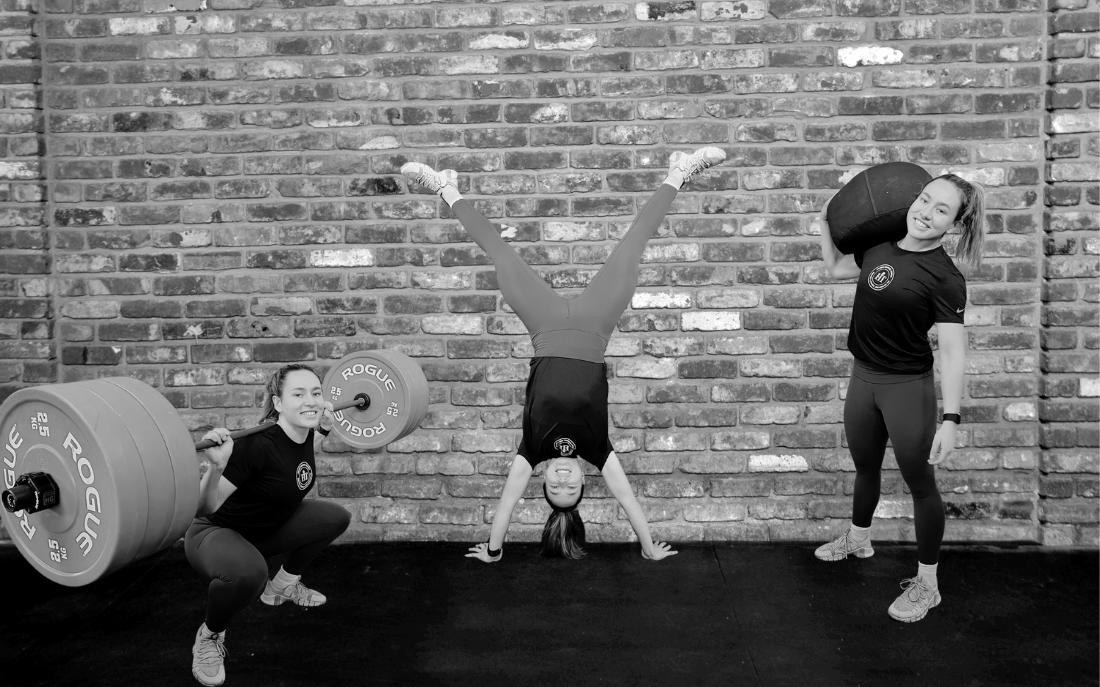
Christian Lee
Personal Trainer
Contact
What I love about FiT: The supportive energy and environment. The staff is legitimately there to help when it comes to just about anything. It helps that they are all extremely capable as well. Another thing that I love about FiT is its approach. FiT's philosophy centers on more than just exercise and nutrition. It focuses on an all-around emphasis on health and well-being that include sleep and stress management strategies.
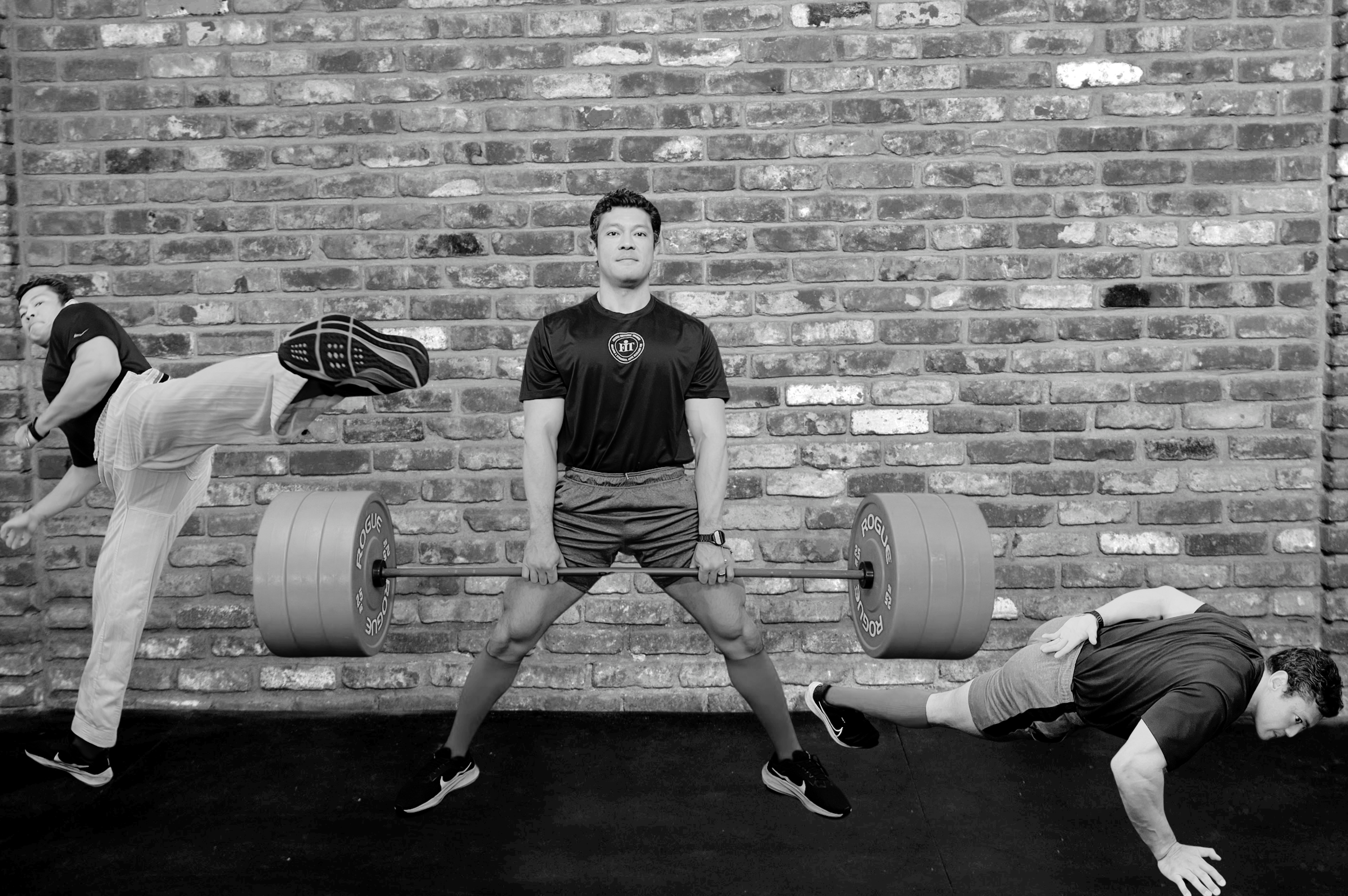
Nick Weigel
Physical Therapist
Contact
Nick graduated from The Ohio State University in 2010 with a degree in English. His focus at that time was to continue rowing competitively, which brought him to the Boston area. There he completed his Doctorate of Physical Therapy from Massachusetts General Hospital Institute of Health Professions in 2018.
In Boston Nick worked at a clinic well known for treating professional runners and other endurance athletes. He enjoyed working with high schoolers and their parents the most. It was here he developed a passion for treating tendinopathy. Having had his own experience with a high hamstring tendinopathy he found it helpful to be able to empathize with others going through this uniquely frustrating condition. It also was here that Nick first started to learn about bike fitting and he has since gone on to obtain his Level 1 International Bike Fit Institute certification.
Nick has enjoyed being a competitive endurance athlete for 17 years. He has gone from world championship trials as a rower, running 5ks to half marathons to ultra trail runs in the White Mountains, to racing UCI cyclocross as a category 2 cyclist. Nick no longer races competitively due to a heart condition but you can now find him olympic weightlifting, mountain biking or gravel riding, taking photos of bike races, or hiking with his wife and 2 dogs.
Nick enjoys taking an active treatment approach with an emphasis on play and variability, he believes movement is the best medicine, and often complex problems have simple solutions.
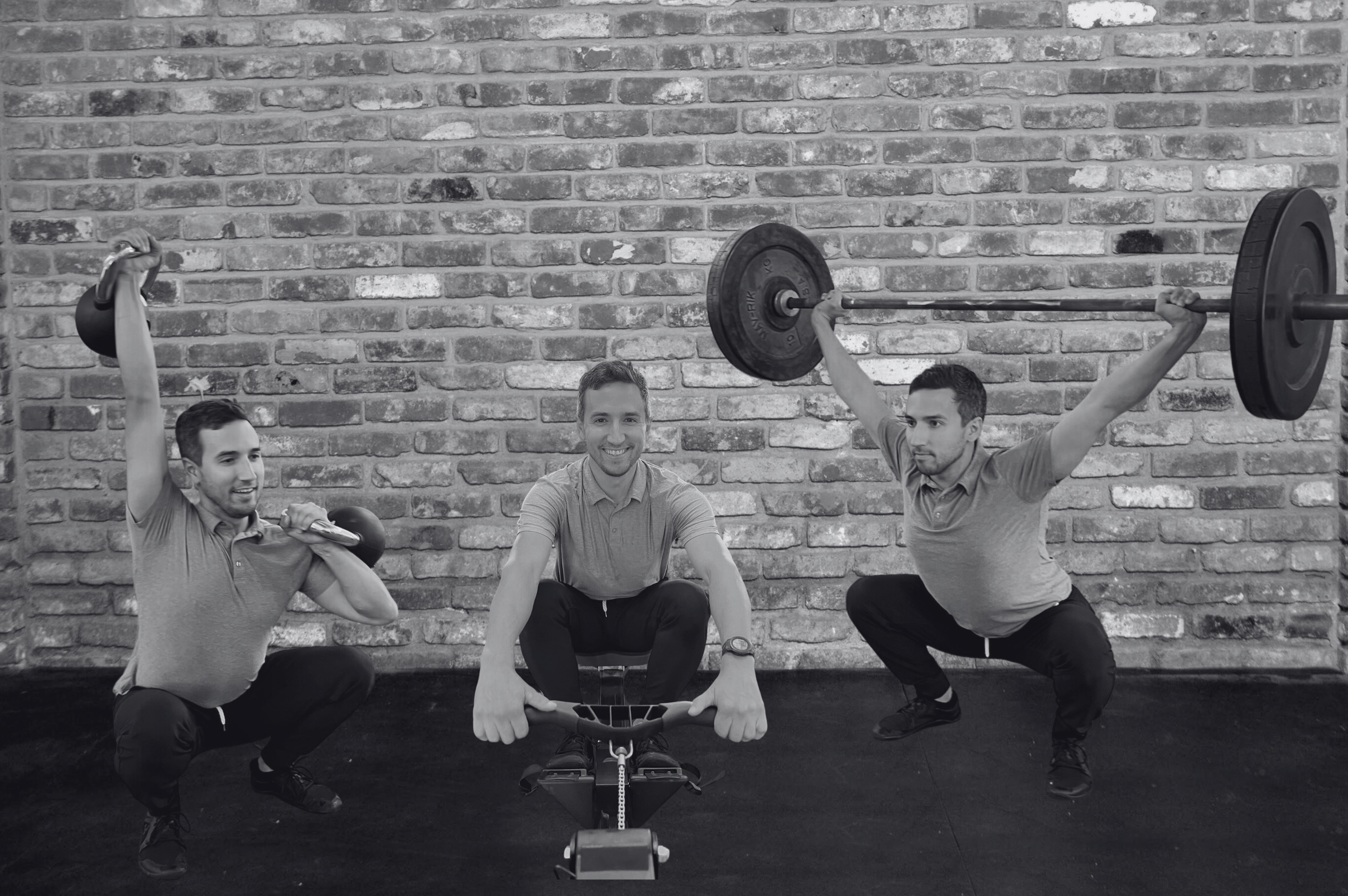
Kristin Pampeyan
Trainer
What I love about FiT: That everyone is invested in the community whether it's by hosting additional activities or sharing knowledge. It's all to make each other better and help out the clients.
Favorite sports: Swimming and Softball
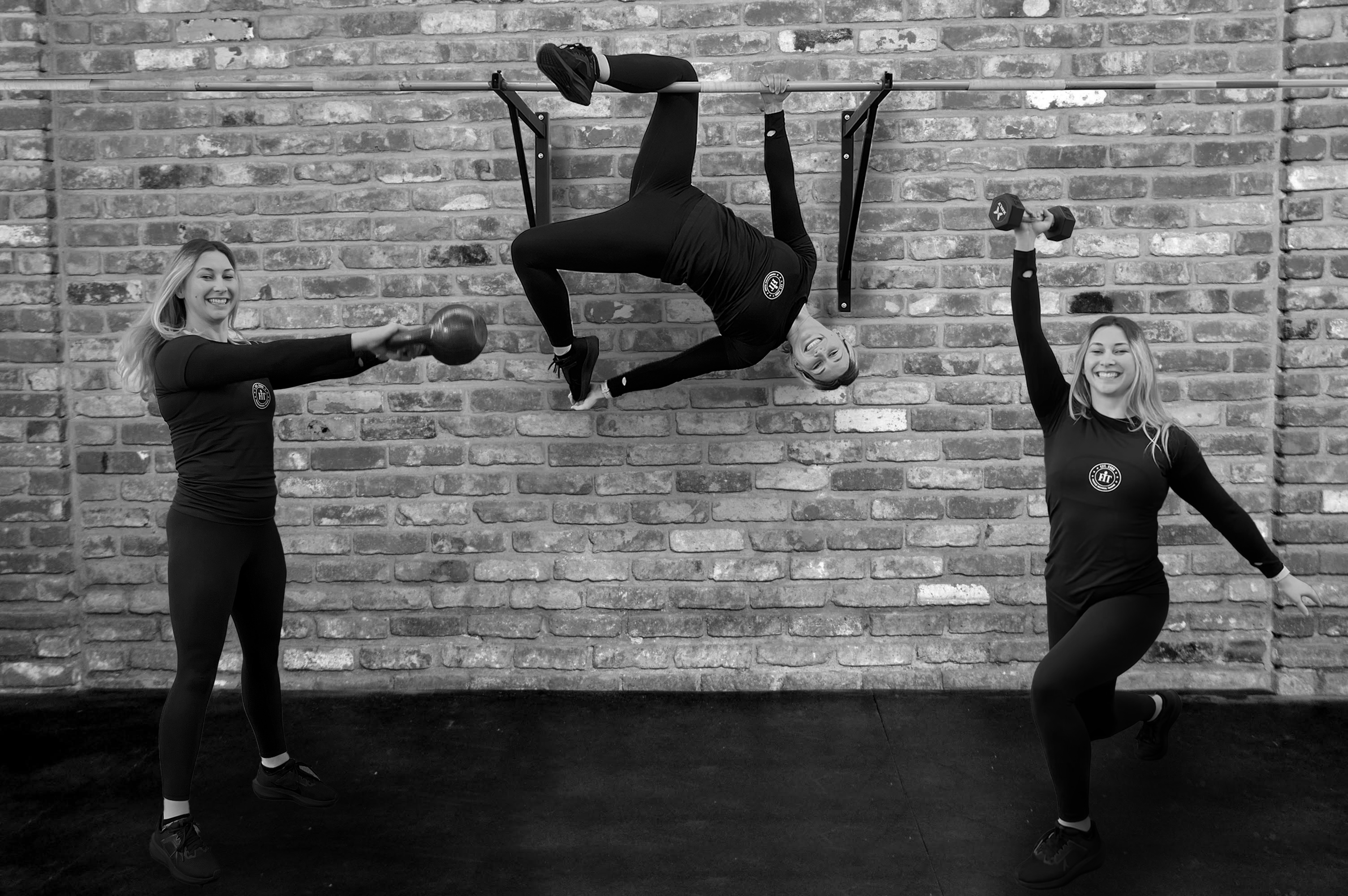
Dae-Von Bishop
Personal Trainer
All the way from East Palo Alto, Dae-Von was an avid basketball player and fan since the age of 10. From Eastside College Prep to Sonoma State to Foothill where he received his AA in psychology. Dae-Von developed a passion for training and helping others stay active and healthy after a bad ankle sprain in high school that occurred during the basketball season. Dae-Von received training the following summer at The Riekes Center, leading him to have a healthy senior year season as well as making 2nd team all league.This is what inspired him to become a trainer and help other athletes stay in great shape. At 20 years old, Dae-Von’s personal training journey began at The Riekes Center, and he hasn’t looked back since.
Dae-Von holds certifications in personal training through NASM, archery, as well as speed and agility and weightlifting both through NSPA. He even will do some basketball skill development on the side for young hoopers. His goal is to help people stay as fit and active as possible with little to no complications. I love training groups of athletes in either middle or high school. Those age groups tend to be the best time for athletes to get faster and stronger, as well as they begin to understand movement patterns which allow them to perform at an elite level. There is also a natural competitive aspect of training in groups that pushes kids to go harder during drills.
In his free time, you can find Dae-Von shooting hoops, working out, playing video games, spending time with friends, trying new foods(as long as there is no avocado), or hanging out with his frenchie, Trouble.
- Personal Trainer (NASM)
- Certified Speed and Agility Coach (National Sports Performance Association)
- Certified Weightlifting Coach (National Sports Performance Association)
- Archery Lvl. 2 (USA Archery)

Jon Angeles
Trainer

James Frederick
Trainer
Contact
-
Dynamic Variable Resistance Training (DVRT) Level 1 Certification
-
Certificate in Nutrition (FAB Academy)
-
Certificate in Applied Stretching Theory and Practice (FTP)
-
NASM-CPT
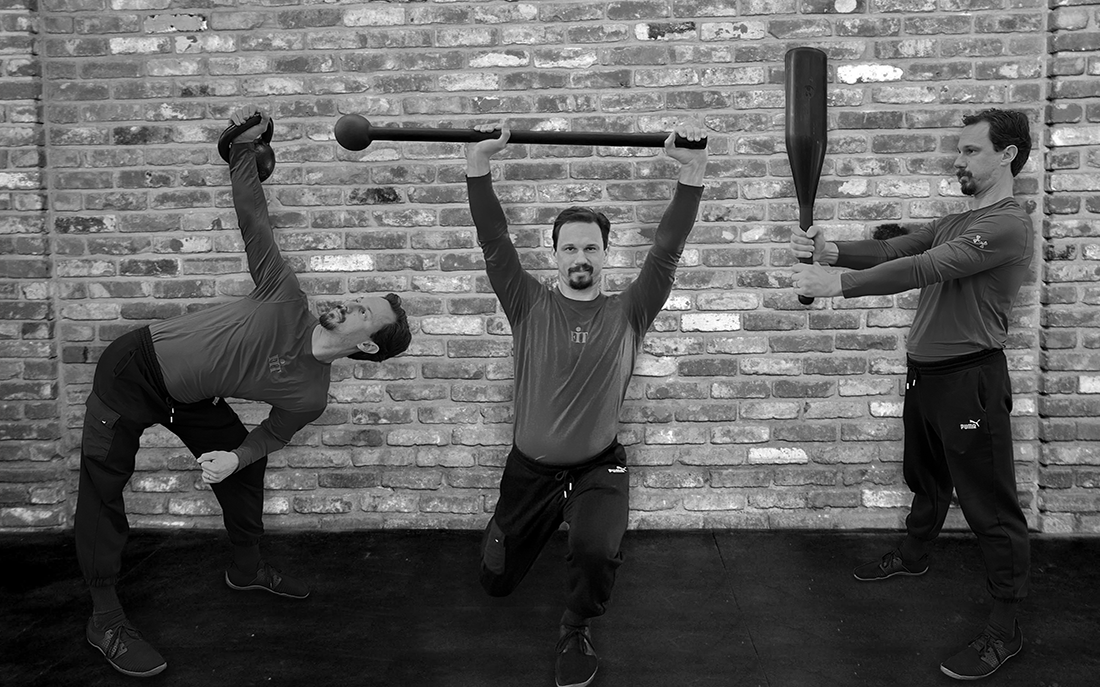
Hannah Golden
Trainer

Serena Earwicker
Operations Manager
Contact
Serena manages the day-to-day operations at FIT. If you need help with something apart from training, she is the one to get it done.
Outside of FIT you will find Serena hiking, biking and playing at the beach with her family.
What I love about FiT: FiT is welcoming and supportive to all. It feels like a hug, a sweaty one. Haha
Favorite sports: Anything I get to see live! Love the energy.
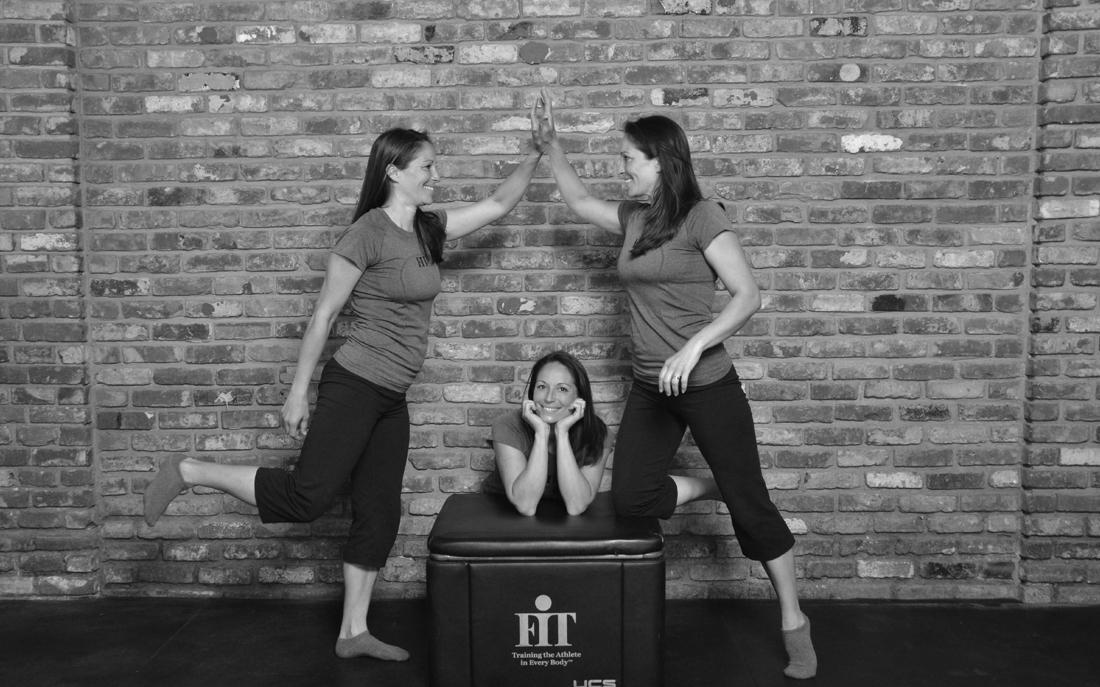
Tracey Downing
Owner
Contact
Tracey Downing has dedicated her life's journey to empowering individuals to discover newfound confidence in their physical abilities and take command of their long-term well-being. Together with her husband, Thom, she established FiT, a health promotion company, in 2000, impacting numerous lives by guiding them towards positive lifestyle shifts and instilling the importance of prioritizing their health.
Her academic journey at the University of Michigan, where she graduated with a degree in Kinesiology, was complemented by a vibrant period of exploration. Tracey's adventures took her across the globe to live in places like New Zealand, Ireland, and Scotland. These enriching experiences allowed her to indulge her passion for travel while simultaneously nurturing her professional growth, with roles in clinical and professional sports settings.
Beyond her entrepreneurial pursuits, Tracey treasures her role as a mother to two wonderful children. Outside of her business endeavors, she has completed an Ironman Triathlete, a testament to her unwavering determination, had the incredible honor of being an Olympic Torch Bearer for the Salt Lake City Olympics, and is a 20 year survivor of breast cancer.
In Tracey's world, fostering physical wellness is not just a profession; it's a lifelong vocation driven by a genuine desire to inspire and uplift others on their unique journeys toward lasting health and vitality.
What I love about FiT: Seeing people change: doing more than they thought they could, learning more than they thought they would, and showing up to make themselves better.
Favorite sports: Playing tennis and watching anything my kids are playing
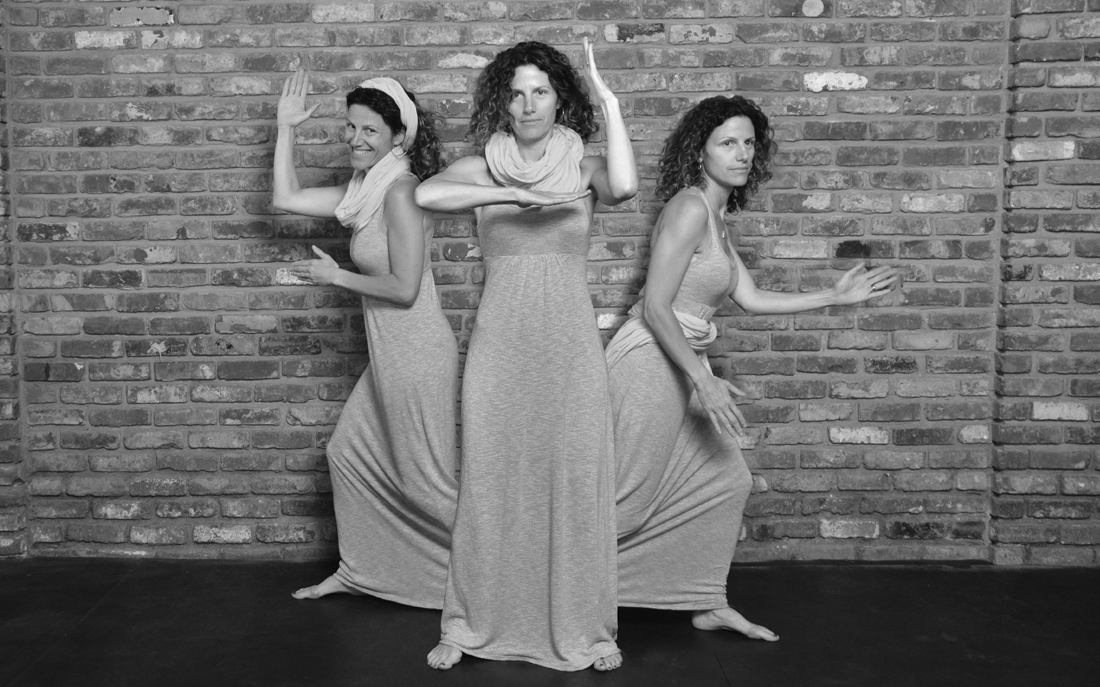
Kendra Wagers
Massage Therapist
Contact
Kendra Wagers has been a Massage Therapist since 2001. A native to California, she began her massage career in the Central valley working with various injury and chronic pain methods under experienced Chiropractors and physical therapists. In 2003 she relocated to Las Vegas, NV to attend the Nevada School of Massage Therapy’s accredited massage program which led to obtaining her National certification from NCBTMB. For over 13 years she worked as a licensed massage therapist in Nevada, including employment at top rated Spas on the Las Vegas strip. Receiving training in various modalities over the years including; Hawaiian Lomilomi, Thai, Sports and Shiatsu. In January of 2017 Kendra decided to return to California and is currently enrolled in the Traditional Chinese Medicine program at Five Branches University, furthering her education on overall health and wellness. With more than 17 years of experience and over 1500 hours in training Kendra has been able to hone in on her passion for healing while combining multiple techniques to provide a personalized and detailed massage to every guest. Her serene approach combined with her roots in structural techniques, offers harmony, balance, and ease to injuries or everyday stresses.
CA State Massage License #73011
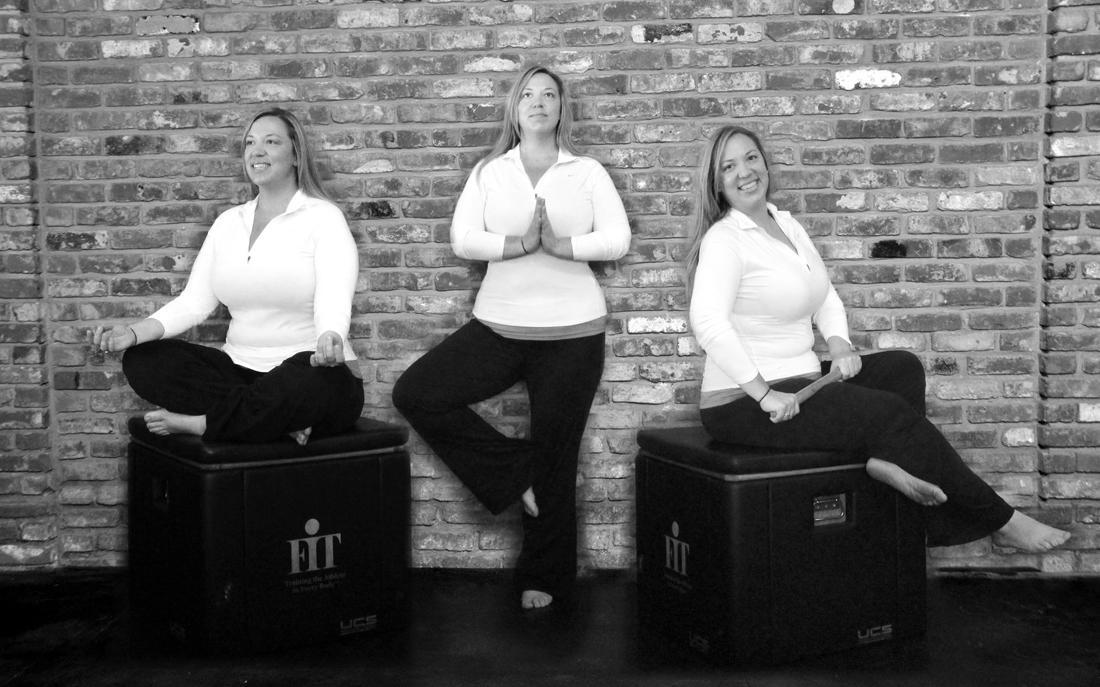
Katie Deangelis
Personal Trainer
Strength and Wellness Coach
- American Council on Exercise
- Crossfit Level One
- NSCA Certified Strength and Conditioning Specialist, In Progress
- Precision Nutrition Level 1 Certified, In Progress

Kevin Martin
Strength and Wellness Coach
Personal Trainer
Certified Strength and Conditioning Specialist
OPEX CCP
Contact
Kevin graduated from Trinity University in San Antonio, TX with a B.S. in Business Administration with a focus in marketing. As a student, Kevin was a five-time conference champion in the 1-meter and 3-meter springboard diving events. He is a Certified Strength and Conditioning Specialist with the National Strength and Conditioning Association.
He has a particular passion for rehabilitation and improving overall functional status. He enjoys identifying and correcting areas of the body that are not operating at their full potential so that everyone can live life to the fullest!
Kevin has completed a full ironman, multiple 70.3 triathlons, 2 full marathons, as well as several shorter distance triathlons and road races. In addition to triathlon, he has a background in gymnastics, swimming, diving, and volleyball. He enjoys helping everyone find the athlete within themselves and find a love for movement and exercise.
When Kevin isn’t training at FiT or exercising, he enjoys cooking, surfing, hiking, and spending time with his wife and dog. He especially loves being a father his young daughter Mayley.
What I love about FiT: Community, Hard work, Supportive, Fun
Favorite sport: Volleyball, Surfing, Diving, Running, Cycling, Swimming (triathlon), Weight lifting. I love watching all sports.
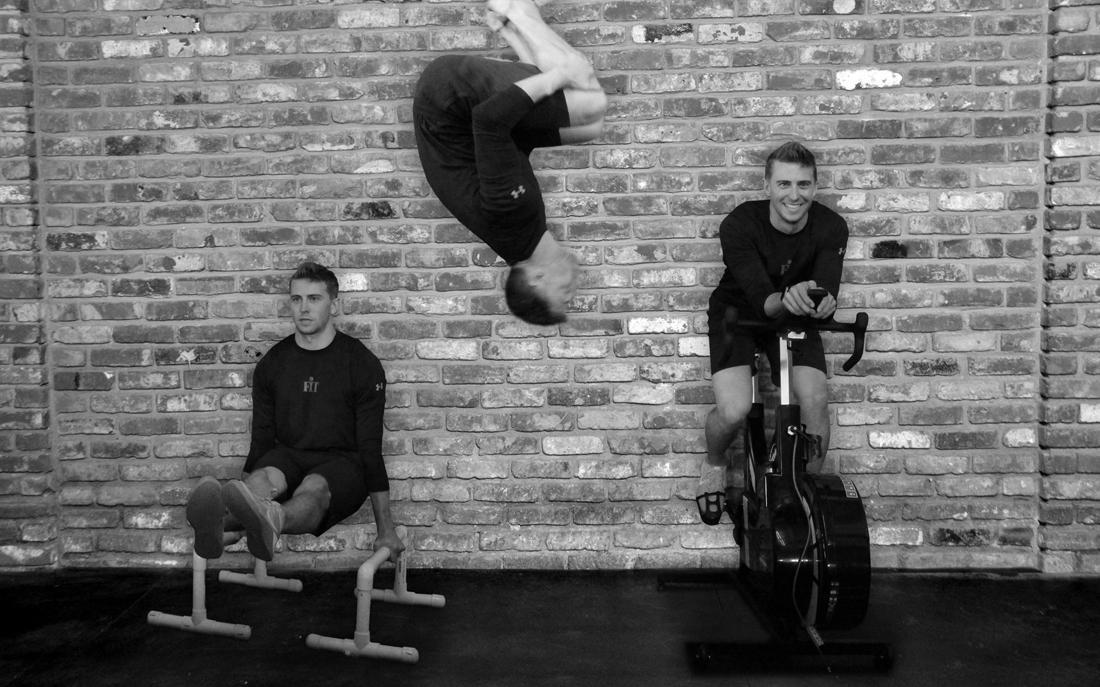
Juliana Oliveira
Trainer
Contact
What I love about FiT: I love the schedule flexibility.
Favorite sports: Snorkeling and swimming

Angelo de la Cruz
Orthopedic Massage Therapist & Personal Trainer
Contact
While studying biological sciences at Cal Poly SLO, it became clear that my health was suffering. I was always tired, I couldn’t sleep well, I had digestive issues, and my emotions would swing dramatically at times. The realization came that in order for me to enjoy life to its fullest, I had to get serious about improving the quality of my health.
Since then, I’ve studied with doctors, physical therapists, clinical nutritionists, physical trainers, bodyworkers, and top innovators in the field of health & wellness. Instead of chasing the symptoms of illness, the most effective approaches to well-being are those that work to eliminate things that degrade health AND instill lifestyle habits that allow the natural environment of our bodies and mind to operate as efficiently as possible. In this way, we can be lead lives with less pain & sickness.
My work aims to use the technology of the body to help you live a more vibrant & productive life.
Some of the things I have fun doing are Olympic Weightlifting, breakdancing, parkour & free-running, snowboarding, creating electronic music, digital art photography/ videography, competing in American Ninja Warrior (My competition run is here) & learning about quantum physics.
What I love about FiT: Uplifting, motivating, supportive
Favorite sport: Martial Arts, ninja warrior obstacle courses, break dancing
- Former Life Science Support Scientist at NASA Ames Research Center
- Certified High Performance Coach
- 2nd Degree Black Belt in Taekwondo
- CrossFit – Level 1 Certification
- USA Weightlifting Club Coach Certification
- Intrinsic Coach Certification – Life & Health Coaching
- BS Anatomy & Physiology
- American Massage Therapy Association – Professional Member
- Nationally Certified in Therapeutic Massage & Bodywork
- Certified Hendrickson Method Instructor
- Primal Reflex Release Instructor
- Certified Massage Therapist
- Certified Functional Diagnostic Nutrition Practitioner

Shaun Conness
Trainer
- USAW Club Coach
- NASM Certified Trainer
- TPI Golf Fitness Instructor
- CHEK Practitioner Level 1
- CHEK Certified Golf Biomechanics Specialist

Jennifer Mulry
Personal Trainer
Contact
What I love about FiT: I love the family atmosphere at FiT and the collective effort to all be the healthiest version of ourselves.
Favorite Sport(s): Basketball & Swimming
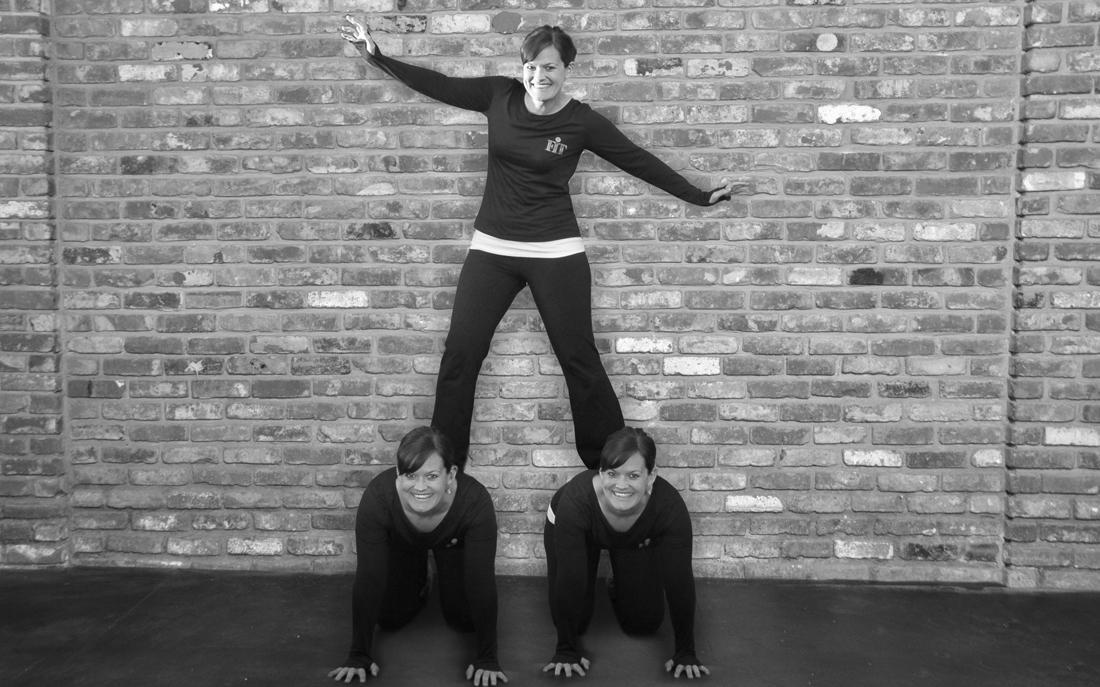
Jeff Samson
Trainer
Martial Arts Trainer
Assisted Stretch Practitioner
Contact
Jeff has been working with clients in the Bay Area since 2007 and performs personal training, martial arts instruction, and assisted stretching to youth, working adults and retired seniors. Most of his youth was spent as an unathletic chubby kid who found various ways of getting into trouble. It wasn't till he was a young adult that he began to study fitness, train himself and learn martial arts. He entered and won a fitness transformation competition in 2006 which changed his life forever. The personal training he received and positive changes he saw from the competition inspired him to teach others.
Jeff went back to school and earned his Fitness Specialist certification through the Wellness and Human Performance Department of Mission College and has held certifications in Circular Strength Training, USAW Olympic Weightlifting, and Bioforce Conditioning Coach. He currently holds a BA in Humanities from The New College of California, is a Life Stretch Instructor through the Stretch to Win Institute and certified FST (Fascial Stretch Therapy) practicioner.
Jeff is a longtime local having lived in California all his life from San Diego to the Bay Area. When he's not training clients or learning new things about health and fitness he enjoys trying new restaurants, sipping specialty coffee, whiskey tasting, looking for whales in the sea and taking road trips.
What I love about FiT: Great space, staff, clients, ability to pursue my passions
Favorite sport: Jiujitsu
